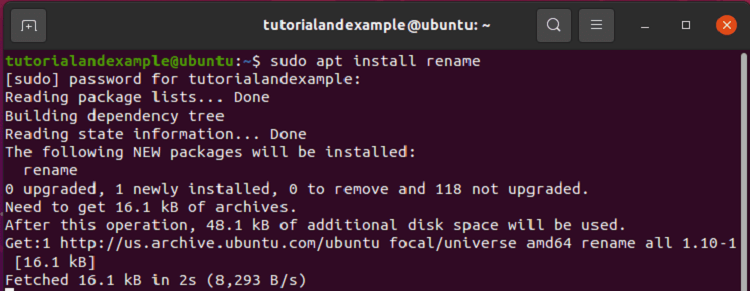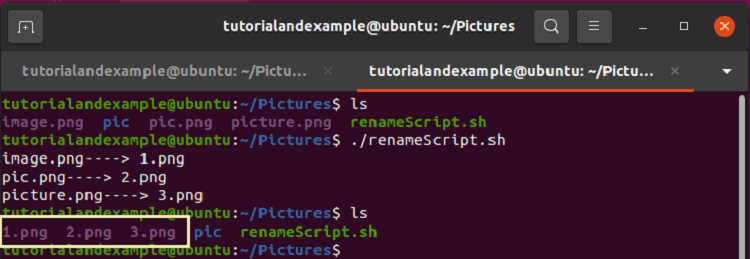Rename Folder in Linux
Rename Folder in Linux
In the Linux system, there is not any single dedicated command for renaming the files and directories. Mostly, the mv command is used extensively for the purpose of renaming and moving files.
Below we have listed some of the popular ways to rename any file and directory.
- With the help of mv command
- With the help of find command
- With the help of rename command
- With the help of bash script
Rename with the help of mv command
The actual working of the mv command is of moving files and directories. This command will stuff from one place to another, and we move our file in the same directory but with a new name. This process eventually leads to renaming the file or directory.
Example
In this example, we have to create a directory at the user's home directory and then rename that directory to a new name.
#mkdir directory_created #ls

Now, rename directory_created to directory_renamed.
#mv directory_created directory_renamed

Hence the directory has been renamed successfully with the help of mv command.
Rename with the help of find command
The primary work of the find command is to search for files in the file system or directory hierarchy. Below we have explained the syntax of the find command to rename any directory.
Syntax
#find . -depth -type d -name <InitialName> -execdir mv {} <FinalName> \
Example
Now, let us try the same example of directory_created and directory_renamed.
#mkdir directory_created
#find . –depth –type d –name directory_created –execdir mv {} directory_renamed
#ls

Rename with the help of rename command
The rename command is not installed in the system binary, and you can install this using the below screenshot.

The primary use case of the rename command is to rename multiple files at a time using the terminal. The rename command uses an expression to rename these multiple files.
Example
In this example, we have renamed all the files and the folders to the lower cases. You could even provide any specific file instead of the *, and the * is used to rename all the content present in the directory.

Rename with the help of bash script
You can rename multiple files and directories by using a bash script. We are going to create a script that could find all the png files and rename them according to the serial numbers.
Example 1
First, we will create some .png files using the touch command. It is straightforward to use the touch command, and you can also create multiple files if assigned as arguments.

Now, we have to rename these image files using a script. Let us code a script for this task. Open a text editor and name the script file as renameScript.sh.
#!/bin/bash
i=1
for Old_name in *.png
do
mv $Old_name ${i}.png
echo $Old_name"----> "${i}”.png”
i=$(( i + 1 ))
done
Now, execute the file and see the results.

Hence all of the .png files have been renamed.
Example 2
We can also rename directories using the bash script, the approach will be the same, but some additional lines will be added.
First, we have created some demo directories using the mkdir command.

Now, we have to create a script to rename these demo directories.
#!/bin/bash
i=0
for Old_directory in *
do
if [ -d "$Old_directory" ]
then
mv "${Old_directory}" "d${i}"
i=$(( i+1 ))
fi
done
The if condition is for confirming whether the variable is a directory or not.
